Discovering May's Birthstones: Emerald and Beyond

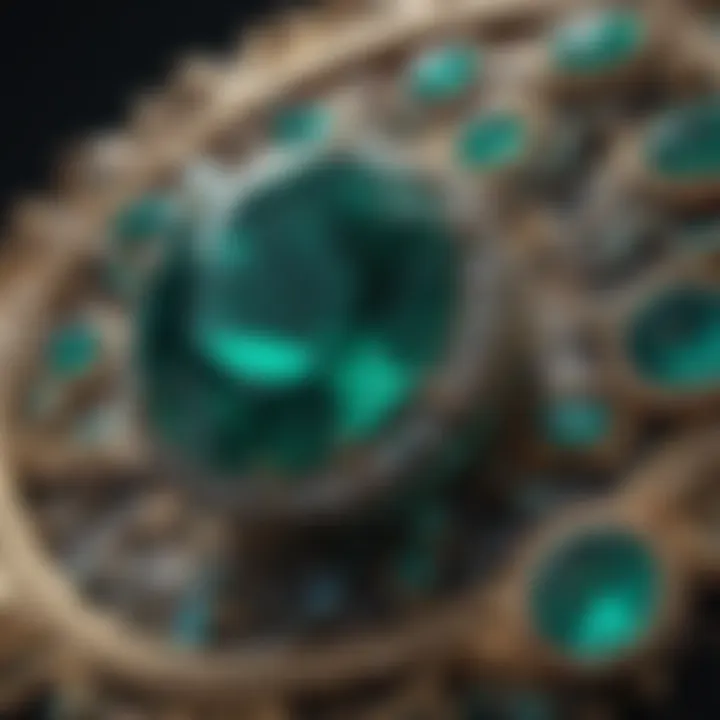
Intro
May is a month that encompasses vibrant greenery and blooms, reminding us of renewal and growth. It is also closely associated with two primary birthstones: the emerald and the almandine garnet. Each of these stones has a rich history and significance intertwined with various cultures. This article aims to showcase the beauty of these birthstones and explore their unique attributes, shedding light on their historical relevance and modern applications in jewelry and beyond.
Gemstone Overview
Definition and Characteristics
Gemstones, often recognized for their rarity and brilliance, are naturally occurring minerals or organic materials. They are typically cut and polished to enhance their aesthetic appeal. Emeralds are renowned for their deep green hue, resulting from trace amounts of chromium or vanadium within the mineral beryl. The almandine garnet, on the other hand, ranges from a reddish-brown to a deep purple, showcasing its distinctive beauty. These gemstones not only captivate jewelry enthusiasts but also serve as symbols of power, love, and fertility.
Classification of Gemstones
Gemstones can be classified in several ways. The most common classifications include:
- Precious stones: These are the rarest and most sought after, typically including diamonds, rubies, sapphires, and emeralds.
- Semi-precious stones: These can be abundant and still possess beauty; examples include garnets, amethysts, and turquoise.
A deeper classification can involve their formation process—whether they are igneous, metamorphic, or sedimentary—and the unique properties that distinguish them from one another.
Properties of Gemstones
Physical Properties
The physical properties of gemstones are essential in assessing their quality. Key attributes include:
- Hardness: Measured by the Mohs scale, this reflects a gem's resistance to scratching. Emeralds, for example, have a hardness of 7.5 to 8.
- Clarity: The presence of inclusions or internal flaws can affect a gem's visual appeal. Higher clarity often correlates with greater value.
- Cut: The manner in which a gemstone is cut can influence its brilliance and how light is refracted.
Chemical Properties
Understanding the chemical composition of gemstones reveals their durability and color. For emeralds, the presence of chromium or vanadium is critical to its lush green shade, while garnets display varying compositions of aluminum, iron, magnesium, and other elements. These chemical attributes not only define the stone's appearance but also its market value.
"Emeralds are not just beautiful gemstones; they carry with them the history of human culture and industry—symbols of prosperity since ancient times."
This exploration into the gemstones of May illustrates a world rich in significance and allure. As we move forward, we will delve deeper into the unique attributes and lore surrounding emeralds, ultimately unveiling their profound symbolism and relevance today.
Prelude to Birthstones
Birthstones hold a unique significance in the world of gemstones. They represent individual months and, in many cultures, are tied to personal meaning and symbolism. In this article, we explore birthstones specifically associated with May, focusing on their appeal to both collectors and enthusiasts. The exploration of these stones reveals historical connections, physical attributes, and cultural implications that elevate their importance beyond sheer aesthetics.
Understanding birthstones involves a deep dive into their definition and cultural significance. Each stone is not merely a mineral; it embodies stories, beliefs, and associations that resonate with people. Additionally, the historical context surrounding birthstones shows their evolution from ancient times to modern practices. This dimension adds layers to our appreciation of these gems, informing the buying choices and personal connections people often forge with them.
As we dissect the topic, we aim to provide a comprehensive guide on May's birthstones. This will cater to gemstone enthusiasts, collectors, jewelry designers, and geology fans. The knowledge gained here can enhance one's appreciation and understanding of these stones, ensuring informed decisions and deeper insights into their natural beauty.
Definition and Purpose
The term "birthstone" refers to a specific gemstone assigned to each month of the year. Traditionally, these stones are associated with various qualities, such as protection, health, and wisdom. Many people wear their birthstone as jewelry to harness its purported benefits. It may serve as a talisman, symbolizing personal attributes or even ancestry. Birthstones are often gifted on birthdays or special occasions, making them tokens of affection.


In the modern context, birthstones transcend mere beauty. They can represent milestones in life, serving as reminders of significant moments. The personalized aspect of birthstones can forge stronger connections between the wearer and the stone. This intrinsic value adds another layer of appreciation for those who seek meaning in their jewelry.
Historical Context
The history of birthstones dates back to ancient civilizations. The practice is interwoven with religious beliefs and cultural traditions. For instance, the twelve stones mentioned in the Book of Exodus are thought to correlate with the months of the year. In ancient Rome, birthstones were believed to combat illness and provide protective qualities.
In the 20th century, the modern system of designating specific stones to each month was formalized. This codification led to birthstones entering mainstream culture, influencing trends in jewelry and gift-giving. The rituals surrounding these gems underscore their enduring allure and significance.
In summation, understanding birthstones, particularly those tied to May, offers valuable insights into their multi-faceted roles in culture and personal identity. From spiritual connections to aesthetic beauty, the importance of these gemstones extends well beyond their presence. This groundwork sets the stage for a deeper exploration of emeralds, the primary birthstone for May.
The Primary Birthstone for May: Emerald
Emerald holds a prominent place as the primary birthstone for May, renowned not only for its striking beauty but also for its deep symbolic meaning. This section will outline why emerald deserves special attention in any discussion on May's birthstones. Its vibrant green hue evokes feelings of renewal and prosperity, inherited from its association with nature and the season of spring. This gemstone is also tied to several traditions and myths across cultures, adding to its importance. In addition, the value of emeralds continues to rise, making them significant in the realms of both jewelry and investment. Hence, understanding emerald provides insights into both personal significance and wider cultural narratives.
Overview of Emerald
Emerald is a variety of the mineral beryl, colored green by trace amounts of chromium and sometimes vanadium. This distinguished gemstone is celebrated for its rich, deep color and excellent transparency. It has been valued since ancient times and remains a symbol of beauty, wisdom, and eternal life. The most sought-after emeralds are those with a vivid green hue. These exceptional stones carry a weighty cultural significance and are traditionally associated with qualities like rebirth and love. Their unique color and historical context enhance their allure.
Physical Properties
Color Variations
The color variations seen in emeralds are primarily attributed to differing amounts of chromium and iron present during formation. The most valued emeralds exhibit a pure, vibrant green. However, some stones lean toward blue-green or yellowish-green shades. Each variation has its appeal, influencing the gemstone's market value. The depth of the green hue is crucial for collectors and enthusiasts alike.
Hardness and Durability
Emeralds rank between 7.5 and 8 on the Mohs scale of mineral hardness. This classification makes them suitable for various types of jewelry, even as daily wear. However, emeralds are often more fragile than other gemstones due to their natural inclusions, known as "jardins." Proper care is essential to preserve them. Durability and the need for maintenance are pertinent when considering emeralds for jewelry selections.
Clarity and Inclusions
Clarity in emeralds relates directly to their value. Many emeralds exhibit inclusions, which can affect their appearance but are often accepted as part of their character. A heavily included stone may have a lower value than one with better clarity. Each inclusion can tell a story about the emerald's origins and geological journey, making it significant for collectors seeking distinctive pieces.
Geological Formation
Emeralds form deep within the earth under specific conditions that include high pressure and temperature. As beryl crystallizes, it incorporates elements affecting its color and clarity. Understanding the geological formation of emeralds provides context for their rarity and the mining techniques required to extract them. Regions that produce emeralds often have unique geological histories that further enhance the stone's prestige and desirability.
Sources and Locations
Colombia
Colombia is the most famous source for high-quality emeralds. The Muzo and Chivor mines produce some of the brightest green stones known globally. Colombian emeralds often exhibit a rich hue and stunning clarity, establishing them as the gold standard in the emerald trade. These mines play a pivotal role in Colombia’s economy and cultural heritage.
Zambia
Zambia is another notable producer of emeralds, particularly around the Kafubu River area. The Zambian emeralds tend to have a darker, more intense color than those from Colombia. This distinction appeals to different markets and collectors, making Zambian emeralds unique. Their growing reputation suggests that they may play an increasingly important role in the global gemstone industry.
Brazil
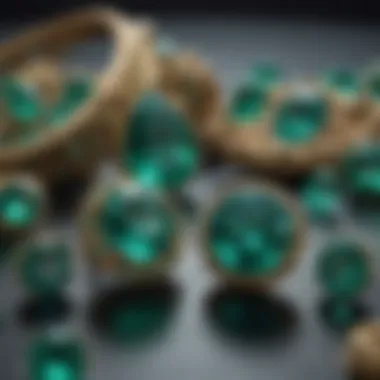
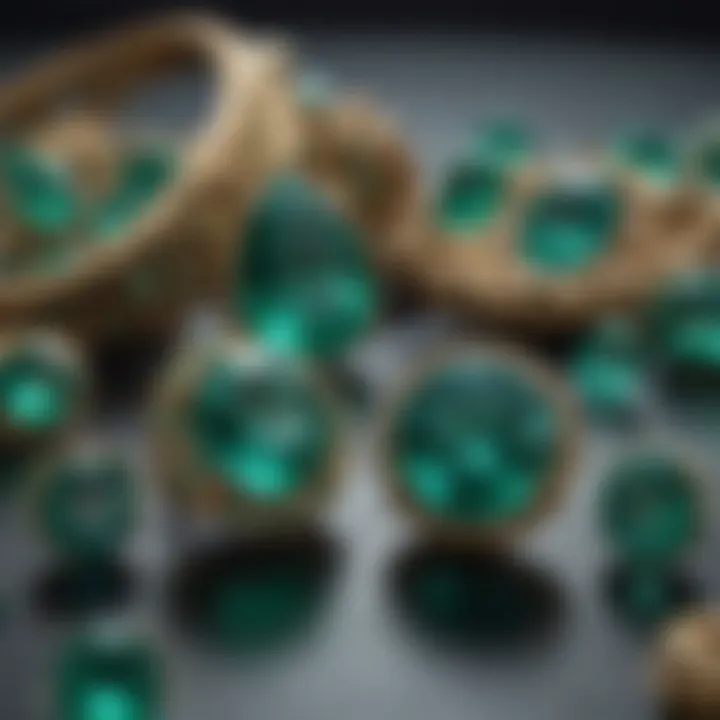
Brazil also contributes to the emerald market, primarily producing stones with a lighter green color. While these may not achieve the same desirability as Colombian gemstones, Brazilian emeralds often feature unique inclusions and fascinating historical stories. Each source brings different characteristics to the stones, contributing to a diverse market.
Symbolism and Cultural Significance
Historical Associations
Throughout history, emeralds have been associated with fertility, rebirth, and love. Ancient civilizations revered them, believing they held protective powers. For example, the Egyptians called emeralds the "stone of fertility" and associated them with their goddess Isis. This historical significance contributes to emeralds being popular in modern-day jewelry.
Modern Interpretations
In modern contexts, emeralds symbolize love and harmony, frequently exchanged among couples and used in engagement rings. Their connection to prosperity aligns well with contemporary values about creating abundance and fostering relationships. Understanding these interpretations amplifies their worth beyond mere aesthetics.
Connection to May Birthdays
Emerald is the birthstone for those born in May, marking it as a symbol of renewal and growth. People born in this month are said to share characteristics attributed to the emerald, such as a vibrant spirit and deep insight. This connection reinforces emerald’s significance in celebrating individual identities and relationships.
Emerald in Jewelry
Design Trends
Emeralds are featured prominently in various jewelry designs today. Their vibrant color enhances rings, necklaces, and bracelets, often set in gold or platinum. The unique hue of emeralds lends itself to diverse stylistic interpretations, appealing to a wide range of aesthetics and preferences. Design trends prioritize showcasing the stone's natural beauty, incorporating it into both traditional and modern pieces.
Care and Maintenance
Caring for emeralds requires a bit more attention due to their natural inclusions. Clean them gently with warm soapy water and avoid harsh chemicals. Storage in soft pouches can prevent scratches from other gemstones. Proper care can help maintain the emerald's beauty over time, making it a lasting treasure.
Investment Value
Emeralds offer significant investment potential, as their value continues to rise with demand. High-quality emeralds can fetch considerable prices at auctions and markets. Investing in well-selected emeralds can provide both aesthetic pleasure and financial growth. Considering their increasing rarity, emeralds are a wise choice for collectors and investors alike.
Additional Stones Associated with May
The additional stones associated with May enrich the understanding of the month's birthstones. While emerald holds the prominent place, stones like agate, jade, and alexandrite offer unique qualities and history. Exploring these other gems provides a broader context of the significance of May's birthstones. Each stone enhances the narrative, revealing cultural and aesthetic aspects valuable to gemstone enthusiasts.
Other May Birthstones
Agate
Agate is a variety of chalcedony that presents itself in a wide array of colors and patterns. Its unique characteristic is the banding that often appears in layers, creating stunning visual appeal. Agate is popular for its perceived healing properties, making it an attractive choice in the realm of metaphysical uses. One significant benefit of agate is its accessibility; it is typically more affordable compared to emeralds. However, the trade-off is that agate does not carry the same value or prestige.
Jade
Jade is esteemed for its rich history and cultural significance, particularly in Asian traditions. It is known for its beautiful green hues but can also be found in other colors like white and lavender. The enduring popularity of jade stems from its associations with luck, prosperity, and protection. Jade’s unique feature is its toughness, making it suitable for intricate carvings and jewelry. The main disadvantage could be the potential high cost of quality jade, which may not appeal to every buyer.
Alexandrite
Alexandrite is renowned for its remarkable color-changing ability. It appears green in daylight but shifts to a purplish red under incandescent light. This unique characteristic has made alexandrite a sought-after gem among collectors. Its rarity contributes to its high value, and it is considered a luxury stone. However, this rarity can also be seen as a disadvantage for those who seek more common gems.
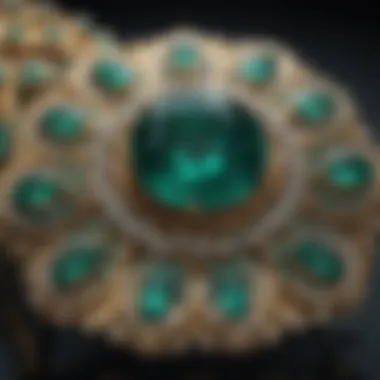
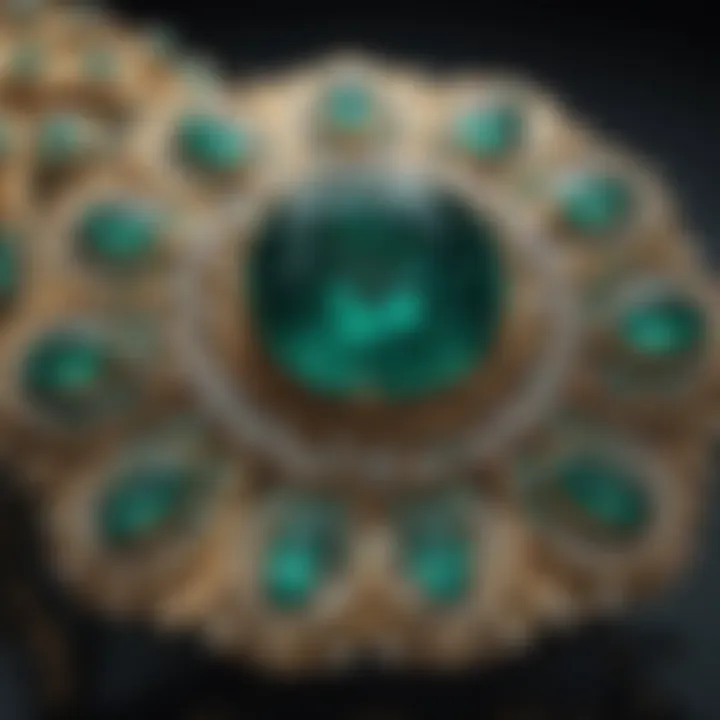
Properties of Other May Stones
The properties of additional May stones are diverse. Agate's banded patterns are believed to promote emotional balance. Jade's toughness encapsulates durability in both design and function. Alexandrite's color-changing ability captivates, illustrating the complexity of nature's creations. Each of these properties adds layers of understanding to the appeal of May stones.
Cultural Relevance
Historical Significance
The historical significance of these stones cannot be overlooked. Agate has been used in ornamental designs for centuries and was believed to protect its wearer. Jade, especially in Chinese culture, symbolizes purity and moral integrity. Alexandrite made a notable appearance in the 19th century and remains a symbol of wealth and luxury. These historical connections deepen the appreciation for each stone, offering a glimpse into how different cultures perceive them.
Modern Uses
Today, the modern uses of these stones extend beyond jewelry. Agate is often utilized in home decor and as a healing stone in wellness practices. Jade continues to be crafted into intricate jewelry and cultural artifacts. Alexandrite garners attention in bespoke jewelry collections. These uses reflect the evolving context of these stones in contemporary society, enhancing their relevance and value.
Ethical Sourcing of May Birthstones
Ethical sourcing of May birthstones plays a crucial role in the overall narrative of gemstones, particularly emeralds. The demand for ethically-sourced stones has grown significantly, reflecting a broader societal shift towards sustainable practices. Consumers increasingly desire a transparent supply chain that ensures fairness and responsibility throughout the mining and distribution processes. This shift not only addresses environmental concerns but also supports communities where these stones are sourced.
Importance of Ethical Practices
Ethical practices in gemstone sourcing encompass several critical elements. They ensure that the extraction of gemstones does not come at the expense of the people or the planet. By prioritizing ethical sourcing, consumers can make informed choices that positively impact the environment and local communities. This, in turn, enhances the overall appeal of the stones, making them more desirable among collectors and jewelry designers. Furthermore, ethical practices foster trust between buyers and sellers, establishing a reputation for integrity within the gemstone market.
Certification Standards
Certification standards serve as benchmarks for quality and ethical responsibility, creating a framework that guides consumers and retailers toward responsible purchasing decisions. These standards typically focus on the origin of the stones and the methods used for their extraction.
Gemstone Origins
Understanding gemstone origins is essential for ensuring responsible sourcing practices. When gem origins are clearly defined, it allows buyers to verify that the stones come from sustainable and fair environments. Notably, stones sourced from verified locations tend to have higher value due to their reputable history. This aspect is also beneficial for May birthstones, particularly emeralds, which often originate from regions like Colombia, known for their high-quality gems. Ethical sourcing from these areas does more than guarantee quality; it also affirms that local communities benefit from the trade, promoting economic growth and social stability.
Fair Trade Practices
Fair trade practices involve ensuring that all stakeholders in the gemstone supply chain receive fair compensation for their labor. This approach promotes equitable trading relationships and improves the livelihoods of those involved in mining and selling gemstones. By adopting fair trade standards, companies demonstrate their commitment to eliminating exploitative practices. The unique advantage of fair trade practices lies in their potential to create positive change, not only within the gemstone industry but also across broader communities globally. However, challenges remain in implementation and monitoring, as maintaining genuine fair trade certification requires continuous effort and oversight.
"Choosing ethically sourced gemstones empowers consumers to contribute to a more sustainable and equitable world."
The End
The conclusion serves as a vital segment in the article about the birthstones of May. It synthesizes the core themes discussed throughout the text, providing readers with a clear wrap-up of the intricate aspects of emeralds and other stones associated with this month. The emphasis on the importance of both the emerald and the alternative May stones deepens the appreciation for their historical and cultural contexts.
In this section, key insights about the geological formation, the ethical sourcing of gemstones, and the design trends in jewelry are reiterated. Readers gain insight into how these factors affect the value and desirability of these stones.
Ultimately, the conclusion invites the audience to consider not only the beauty of the stones but also the stories and values they embody. Engaging with May birthstones becomes more than a matter of aesthetics; it is a learning experience about ancient lore, contemporary practices, and personal connections to these beautiful gems.
Summary of Key Points
- Emeralds are the primary birthstone for May, symbolizing rebirth and renewal.
- The significance of color variations and clarity contributes greatly to the value of emeralds.
- Ethical sourcing is crucial in the gemstone industry, affecting brand reputation and consumer preferences.
- Additional birthstones like Agate, Jade, and Alexandrite also carry rich histories and meanings.
- Understanding the cultural relevance deepens personal connections to May birthstones and their use in jewelry.
Final Thoughts on May Birthstones
In contemplating May's birthstones, one embraces a blend of beauty, history, and ethical awareness. Emeralds reign as a symbol of love and prosperity, holding a significant place in both historical contexts and modern interpretations.
Additionally, stones like jade and agate showcase the diversity within the category of May stones. Collectors and enthusiasts should appreciate not just the aesthetic but also the stories behind each stone. Such knowledge enhances their value and enriches the experience when wearing or gifting these gemstones. Living with an emerald or other May stones means connecting to their deep-rooted cultural significance, which continues to resonate in today's world.



